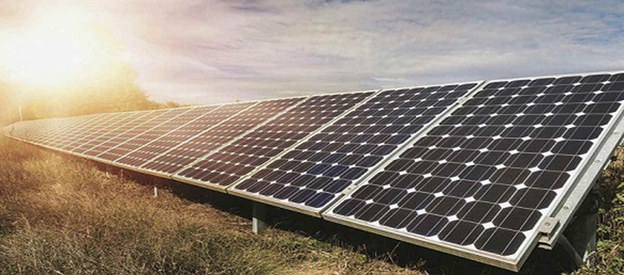Solar photovoltaics (PV) in India
- Posted By
10Pointer
- Categories
Polity & Governance
- Published
10th Aug, 2022
-
Context
India has added significant photovoltaics capacity over the past decade, achieving over 50 GW by 2022.

About
- Solar photovoltaics (PV) has driven India’s push towards the adoption of cleaner energy generation technologies.
- India’s Journey: From less than 10 MW in 2010, India has achieved PV capacity over 50 GW by 2022.
- By 2030, India is targeting about 500 GW of renewable energy deployment, out of which ~280 GW is expected from solar PV.
- This necessitates the deployment of nearly 30 GW of solar capacity every year until 2030.
India’s Solar Module Manufacturing Capacity
- Currently it is limited to ~15 GW per year.
- The demand-supply gap widens as we move up the value chain — for example, India only produces ~3.5 GW of cells currently.
- India has no manufacturing capacity for solar wafers and polysilicon ingots, and currently imports 100% of silicon wafers and around 80% of cells even at the current deployment levels.
- India remains dependent on import of solar modules for field deployment.
Key components solar PV value chain
- Fabricating polysilicon ingots which need to be transformed into thin Silicon wafers that are needed to manufacture the PV mini-modules.
- The mini-modules are then assembled into market-ready and field-deployable modules.
Current Government Policy
- The government has identified this gap, and is rolling out various policy initiatives to push and motivate the industry to work towards self-reliance in solar manufacturing, both for cells and modules.
- Key initiatives include a 40% duty on the import of modules and 25% duty on the import of cells, and a PLI scheme to support manufacturing capex.
- It is mandatory to procure modules only from an approved list of manufacturers (ALMM) for projects that are connected to state/ central government grids; so far, only India-based manufacturers have been approved.
Major Initiative in Renewable Energy Sector
- National Solar Mission (NSM): In January 2010, the NSM was launched with the objective of establishing India as a global leader in solar energy, by creating the policy conditions for solar technology diffusion across the country.
- The initial target of NSM was to install 20 GW solar power by 2022. This was up-scaled to 100 GW in early 2015.
- Pradhan Mantri Kisan Urja Suraksha evam Utthaan Mahabhiyan (PM-KUSUM): It was launched in 2019 and it aims to help farmers access reliable day-time solar power for irrigation, reduce power subsidies, and decarbonise agriculture.
- PM-KUSUM provides farmers with incentives to install solar power pumps and plants in their fields.
- Atal Jyoti Yojana (AJAY) Phase-II: A Scheme for the installation of solar street lights with 25% fund contribution from MPLAD Funds was discontinued from 1 April 2020 as the Government decided to suspend the MPLAD Funds for the next two years i.e. 2020-21 and 2021-22.
- However, the installation of 1.5 lakh solar street lights sanctioned under the scheme till March 2020 was under progress.
- Solar Parks Scheme: To facilitate large scale grid-connected solar power projects, a scheme is under implementation with a target capacity of 40 GW capacity by March 2022.
- Solar parks provide solar power developers with a plug and play model, by facilitating necessary infrastructure like land, power evacuation facilities, road connectivity, water facility etc. along with all statutory clearances.
